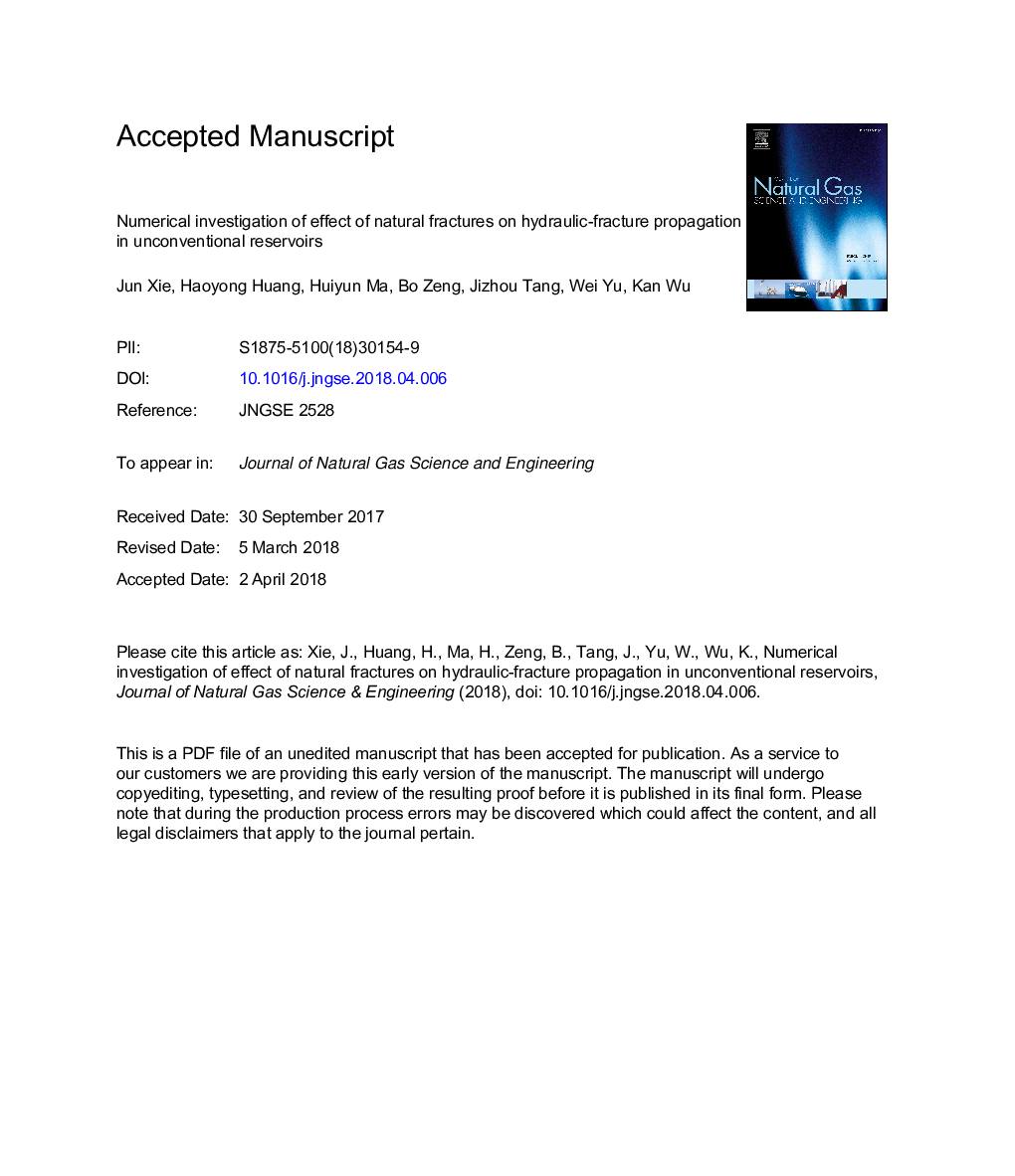| Article ID | Journal | Published Year | Pages | File Type |
|---|---|---|---|---|
| 8128095 | Journal of Natural Gas Science and Engineering | 2018 | 35 Pages |
Abstract
Field observations show that natural fractures are commonly presented in unconventional reservoirs, acting as planes of weakness that divert hydraulic fracture propagation and generate complex fracture geometry. We systematically investigated the impacts of natural fractures on net injection pressure, fracture geometry, fluid volume distribution, and induced stresses using a complex fracture propagation model. The model fully couples rock deformation and fluid flow in the fractures, perforations, and the wellbore. A simplified three-dimensional displacement discontinuity method is used to calculate multiple fracture interaction within stages as well as between stages and wells. Fluid volume distribution between each fracture is automatically calculated during pumping based on fluid resistance. The simulation results show that when a hydraulic fracture diverts into a natural fracture, the net injection pressure is elevated, resulting in width enlargement of the fracture segment before the natural fracture and reduction of total fracture length. Much less fluid flows into the fracture wing that diverts into the natural fracture. Due to a larger compressional stress exerting on the natural fracture, fracture width of the fracture segment on the natural fracture is restricted, which significantly affects proppant transport and distribution. Additionally, differential stress, approach angle, length of natural fractures, and relative position of natural fractures are critical parameters affecting elevation of net injection pressure as well as fracture width enlargement and restriction before and on natural fractures. As differential stress and approach angle increase, higher net injection pressure is required, shorter fracture length is created, and width enlargement and restriction before and on natural fractures are more severe. Deviation of fracture propagation from the original path is greatly affected by the length of natural fractures. The larger the natural fracture, the more deviation from the original path. This study highlights the behaviors of a hydraulic fracture diverting into a natural fracture and the final fracture geometry.
Related Topics
Physical Sciences and Engineering
Earth and Planetary Sciences
Earth and Planetary Sciences (General)
Authors
Jun Xie, Haoyong Huang, Huiyun Ma, Bo Zeng, Jizhou Tang, Wei Yu, Kan Wu,
